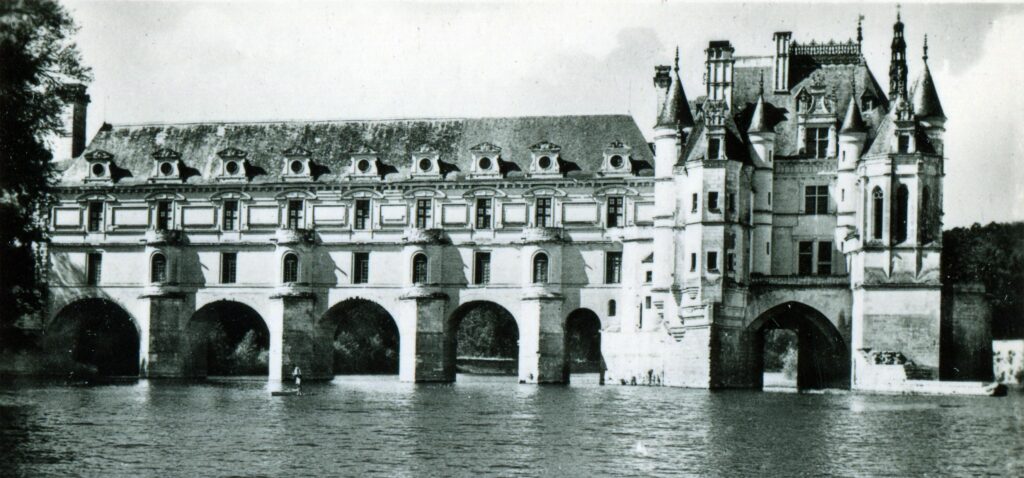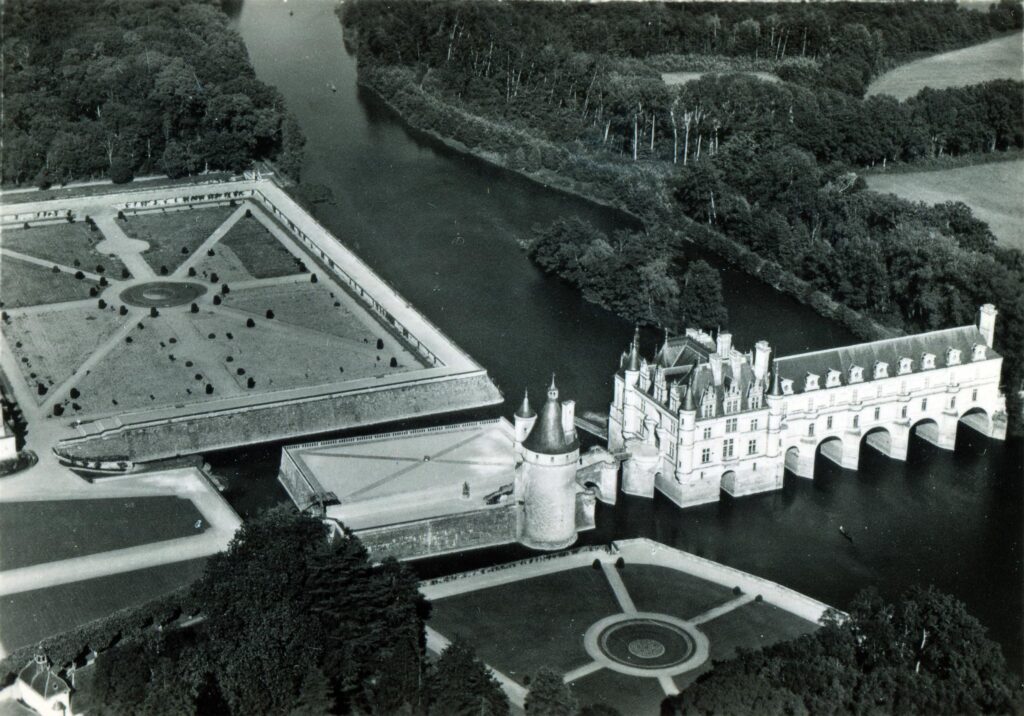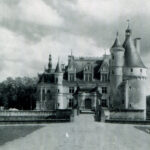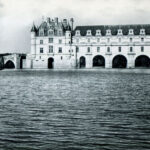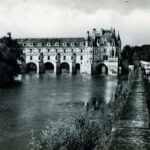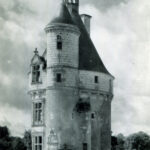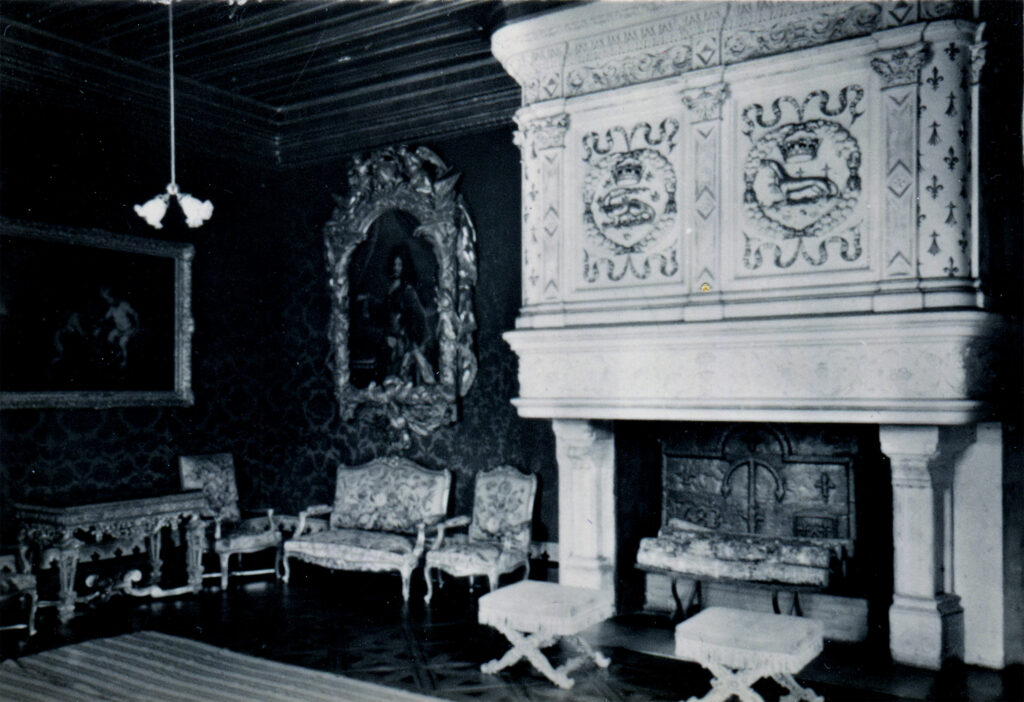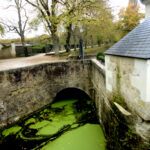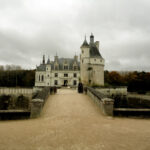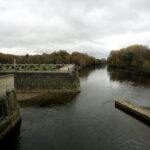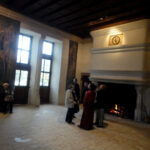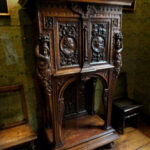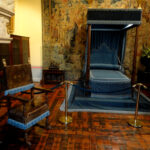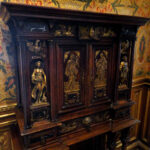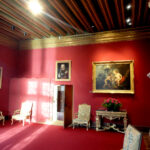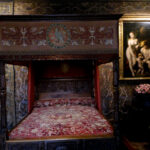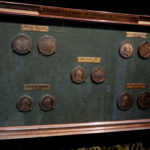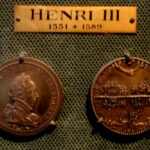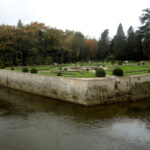Guide to the Loire Valley, the most famous castles.
Royal Chenonceau Castle or “Castle of the Ladies”
Château de Chenonceau is a French Royal castle located on the Cher River, near the small village of Chenonceau in the department of Indre-et-Loire in the Loire Valley in France, see on the map. This is one of the most famous castles of the Loire Valley.
The manor of Chenonceau is first mentioned in writing in the 11th century. The current castle was built in 1514–1522 on the foundations of an old mill and was later extended to the river. The bridge over the river was built (1556-1559) by the French Renaissance architect Philibert de l’Orme, and the gallery on the bridge was built in 1570-1576 by Jean Bullant.
An architectural mixture of late Gothic and early Renaissance, Chenonceau Castle and its gardens are open to the public. Apart from the Royal Palace of Versailles, this is the most visited castle in France.
The castle has been classified as a historical monument by the French Ministry of Culture since 1840. Today, Chenonceau is the main attraction, with around 800,000 visitors in 2007. Fragments of history:
Marquez family. In the 13th century, the estate of Chenonceaux belonged to the Marquez family. The original castle was set on fire in 1412 to punish the owner, Jean Marquez, for sedition. He rebuilt a castle and a fortified mill on the site in the 1430s. Jean Marquez’s heir, Pierre Marquez, found it necessary to sell.
Thomas Boyer. Chancellor of King Charles VIII of France, purchased the castle from Pierre Marquez in 1513 and demolished most of it (resulting in the castle’s 500th anniversary in 2013: MDXIII – MMXIII), although it was built in the 15th century. The foundation remained standing. Boye built an entirely new residence between 1515 and 1521. The work was led by his wife Katherine Briçonnet, who rejoiced at the accommodation of the French nobility here, including King Francis I twice.
Diane de Poitiers. In 1535, the castle was confiscated by King Francis I of France from his son Boyer for unpaid debts to the crown; after the death of Francis in 1547, Henry II gave the castle to his mistress Diane de Poitiers, who became passionately attached to the castle on the river bank. In 1555, she commissioned Philibert de l’Orme to build an arched bridge connecting the castle to the opposite bank. Diana then oversaw the planting of extensive flower and vegetable gardens, as well as various fruit trees. Located on the banks of the river, but protected from flooding by stone terraces, the exquisite gardens were divided into four triangles. Diane de Poitiers was the undisputed mistress of the castle, but ownership remained with the crown until 1555, when, after a year of delicate legal manoeuvres, possession was finally ceded to her.
Catherine de’ Medici. After the death of King Henry II in 1559, his strong-willed widow and regent, Catherine de Medici, forced Diana to exchange him for Chaumont Castle. Queen Catherine then made Chenonceau her favorite residence by adding a new series of gardens. As regent of France, Catherine spent a fortune on a castle and spectacular nightly parties. In 1560, the first fireworks in France took place during the celebration of the ascension to the throne of Catherine’s son Francis II. The large gallery, which extended along the existing bridge across the entire river, was consecrated in 1577. Catherine also added rooms between the chapel and the library on the east side of the de logis building, as well as a service wing to the west. side of the entrance yard. Catherine considered further expansion of the castle, as shown in an engraving published by Jacques Androuet du Cerceaux in the second (1579) volume of his book Les plus excellents bastiments de France. Had this project come to fruition, the current castle would have been only a small part of a huge manor, laid out “like pincers around existing buildings”.
Louise de Lorraine. After Catherine’s death in January 1589, the castle passed to her daughter-in-law, Louise of Lorraine, wife of King Henry III. Louise was in Chenonceau when she learned of her husband’s murder in August 1589, and she fell into a state of depression. Louise spent the next 11 years until her death in January 1601 wandering aimlessly through the castle’s corridors in mourning robes amid gloomy black tapestries embroidered with skulls and bones.
Duke of Vendôme. Henri (Henry) IV obtained Chenonceau for his mistress Gabrielle d’Estrées, paying off the debts of Catherine de Medici, which Louise had inherited and threatened to destroy her. In response, Louise left the castle to her niece Françoise de Lorraine (Françoise de Lorraine), then six years old and betrothed to four-year-old César de Bourbon, Duke of Vendôme, the natural son of Gabriel d’Estre and Henri IV. The castle belonged to the Duke of Vendôme and his descendants for more than a hundred years. The Bourbons were not interested in the castle, except for hunting. In 1650, Louis XIV was the last king of the old regime to visit.
The Château de Chenonceau was bought by the Duke of Bourbon in 1720. Gradually, he sold all the contents of the castle. Many beautiful statues ended up in Versailles.
Louise Dupin. In 1733, the estate was sold for 130,000 livres to a wealthy landowner named Claude Dupin. His wife, Louise Dupin, was the daughter of the financier Samuel Bernard (Samuel Bernard) and actress Manon Dancourt (Manon Dancourt), whose mother was also an actress who performed at the Comédie Francaise in 1684. Louise Dupin was “intelligent, beautiful and highly professional; a cultured woman who had theater in her blood.” Claude Dupin, a widower, had a son, Louis Claude, by his first wife, Marie Aurora of Saxony, who was the grandmother of George Sand (née Aurora Dupin). Louise Dupin’s literary salon in Chenonceau attracted such leaders of the Enlightenment as the writers Voltaire, Montesquieu and Fontenelle, the naturalist Buffon, the playwright Marivaux, the philosopher Condillac, as well as the Marquise de Tensin and the Marquise du Deffand. Jean-Jacques Rousseau was Dupin’s secretary and taught her son. Rousseau, who worked on Émile at Chenonceau, wrote in his Confessions: “We played music there and put on comedies. I wrote a play in verse entitled “The Way of Sylvia” after the name of a path in the park along the River Cher.
Revolution. The widowed Louise Dupin saved the castle from destruction during the French Revolution, keeping it from being destroyed by the Revolutionary Guards because “it was important for travel and trade, as it was the only bridge across the river for many miles.”
Marguerite Pelouze. In 1864, the castle was acquired by the wealthy heiress Marguerite Peluz. Around 1875, she commissioned the architect Félix Roguet to restore it. He almost completely refurbished the interior and removed several of Catherine de’ Medici’s additions, including the rooms between the library and the chapel, and her alterations on the north façade, among which were the figures of Hercules, Pallas, Apollo and Cybele, which were moved to the park. With the money spent by Margherita on these projects and expensive parties, her finances were depleted and the castle was confiscated and sold.
Recent history. José-Emilio Terry, a Cuban millionaire, purchased Chenonceau from Madame Pelouze in 1891. Terry sold it in 1896 to family member Francisco Terry. In 1913, the castle was acquired by Henri Menier, a member of the Meunier family, famous for its chocolates, to which it belongs to this day.
During the First World War, Gaston Meunier built a gallery for a hospital ward.
During World War II in June 1940, the Germans bombed the castle. It was also a means of escape from the Nazi-occupied zone on one side of the Scher River to the “free” zone on the opposite bank. Captured by the Germans, the castle was bombed by the Allies on June 7, 1944, when the chapel was destroyed and its windows were destroyed.
In 1951, the Meunier family entrusted the restoration of the castle to Bernard Voisin, who returned the dilapidated building and gardens (ravaged by the Cher River flood in 1940) to reflect its former glory.
- Сhenonceau Royal Сastle (Loire Valley)
- Photo N4
- Photo N5
- N6 Tower
Guide Book and the virtual tour
Forecourt and tower of the de Mark family. Guards Hall and Chapel. Bedroom of Diane de Poitiers. Green office. Library with rare books. Salon of Louis XIV. Vestibule and stairs. Apartment Catherine Brisson with all the decorations.
World War I: gallery, hospital and kitchens. From the Renaissance to the Vichy Government. Salon of Francis I.
Bedroom of the five queens, bedroom of the Medici. Cabinet of prints. Gallery of Catherine de Medici.
Bedrooms of Cesar of Vendôme, Gabrielle d’Estre and Louise of Lorraine. Next is the lobby on the third floor.
Garden of Diane de Poitiers and Catherine de Medici. Vegetable garden – flower garden. 16th century farm Gallery of horse-drawn carriages.
- Surroundings of the castle, old houses, canals
- Château de Chenonceau Castle
- A real fortress, a defensive WW2 fortified area
- Castle interior – fireplaces, tapestries
- Royal bedroom, the bed
- Fragment of furniture, sculpture
- Collection of oil paintings by old masters
- Bedroom of Catherine de Medici
- Ancient medals and coins of France, numismatics
- Medals and coins Henri III
- Landscape gardens in winter and autumn
Practical information.
Working hours.
Ticket price.
How to visit the castle, travel from Paris.
- Private Loire Valley sightseeing tours from Paris or Charles de Gaulle Airport with the program “Three castles in one day” with Engkish speking guide
World War I – II battlefield tours and Chenonceau castle.
The castle is a memorial object, a hospital during the First World War. During the Second World War, a demarcation line ran exactly along the castle. Local resistance, partisans and underground helped many citizens to escape from the occupied zone to the free zone. A visit to the castle of Chenonce can be included in the program of a tour of the battlefields in the Loire Valley (tank Museum in Saumur, military engineers in Angers, etc.) The trip is possible from Paris or immediately after the meeting from the airport Charles de Gaulle (Orly, Beauvais) for one day or 2-3 days. Do not rush to book a hotel in Paris for the duration of your trip. We will help you to create an excellent individual program for your trip and, perhaps, book a few nights in local hotels on the Loire.

